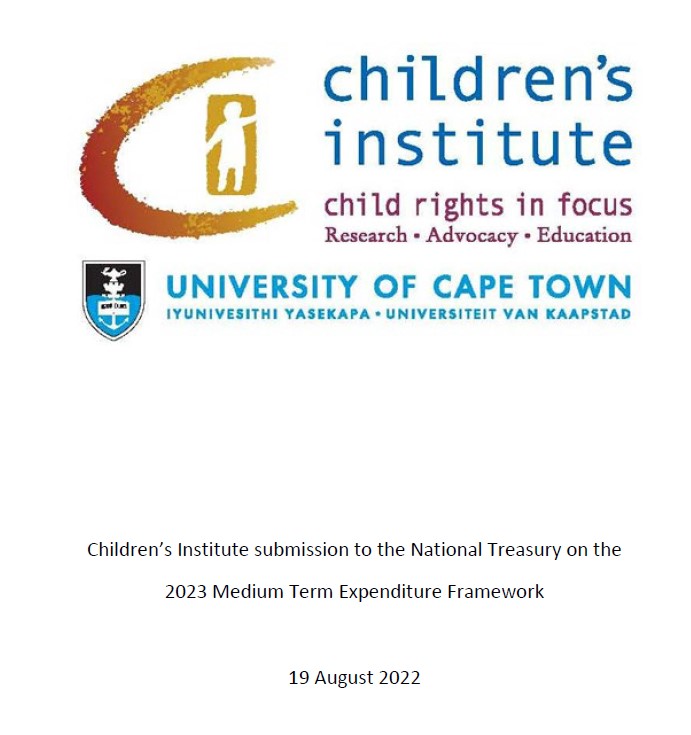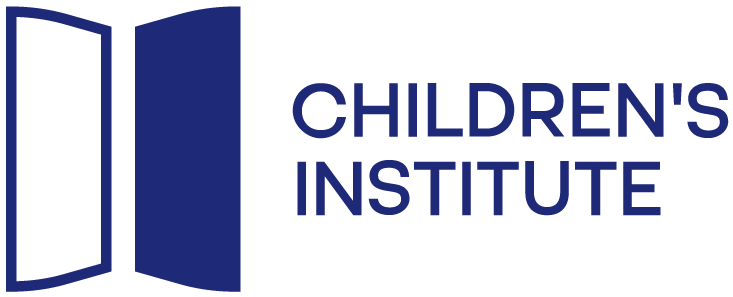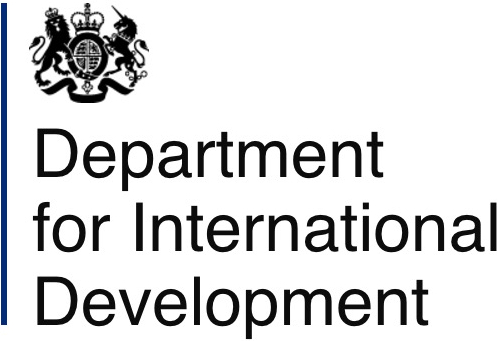Definition
This indicator shows the number and percentage of children aged 5 – 6 who are reported to be attending an early learning programme (ELP) or school – in other words, those attending out-of-home group care and learning facilities including ECD centres, pre-Grade R, Grade R or Grade 1 in ordinary schools. While all these facilities provide care and stimulation for early learning for young children, the emphasis on providing learning opportunities through structured learning programmes differs by facility type. Data
Source
Statistics South Africa (2003 - 2025) General Household Survey 2002 - 2024. Pretoria, Cape Town: Statistics South Africa.
Analysis by Katharine Hall & Sumaiyah Hendricks, Children's Institute, University of Cape Town.
Analysis by Katharine Hall & Sumaiyah Hendricks, Children's Institute, University of Cape Town.
Notes
- Children are defined as persons aged 0 – 17 years. The proportions are based on children in the age group appropriate for school level: Primary 7 – 13 years; Secondary 14 – 17 years.
- Population numbers have been rounded off to the nearest thousand.
- Sample surveys are always subject to error, and the proportions simply reflect the mid-point of a possible range. The confidence intervals (CIs) indicate the reliability of the estimate at the 95% level. The wider the CI, the more uncertain the proportion. Where CIs overlap for different sub-populations or time periods we cannot be sure that there is a real difference in the proportion, even if the mid-point proportions differ. CIs are represented in the bar graph by vertical lines at the top of each bar.
What do the numbers tell us?
Educational inequalities are strongly associated with socio-economic (and therefore also racial) inequalities in South Africa.[1],[2] These inequalities are evident from the early years, even before entry into primary school.[3] They are exacerbated by an unequal schooling system,[4],[5] and are difficult to reverse. But early inequalities can be reduced through pre-school exposure to developmentally appropriate activities and programmes that stimulate cognitive development.[6],[7] Evidence suggests that quality group learning programmes are beneficial for cognitive development from about three years of age.[8] Provided that they are of good quality, early learning programmes are an important mechanism to interrupt the cycle of inequality by reducing socio-economic differences in learning potential between children before they enter the foundation phase of schooling.
The National Development Plan (NDP) priorities, cited in the DBE’s 2030 ECD Strategy,[9] include universal access to two years of early childhood development programmes. The DBE funds and monitors thousands of private and community-based ELPs in addition to school-based Grade R classes. The NDP proposes the introduction of a second year of pre-school education, and that both years be made universally accessible to children.[10] It therefore makes sense to monitor enrolment in learning programmes for 5 – 6-year-olds.
According to the DBE’s administrative data, 860,000 learners were attending Grade R at ordinary schools in early 2024, of whom 95% were in public (government) schools. Of the 26,000 learners attending pre-Grade R in ordinary schools, just over half (52%) were enrolled in independent schools, while 48% were at public (government) schools.[11] These would include some private ECD centres which are registered as schools, but would exclude many other independent and unregistered facilities. Government schools are therefore providing the large bulk of education services for children in Grade R, but not for pre-Grade R.
In 2019, 93% of children (nearly 2.2 million) in the pre-school age group (5 – 6-year-olds) were reported to be attending some kind of educational facility, mostly in Grade R or Grade 1. This was double the 2002 level, signifying substantial gains in access to ELPs over the years. Unlike many other child indicators, this measure of ECD access is not associated with significant inequalities across provinces.
Similar patterns were found in analyses of the 2007 Community Survey and the 2008 National Income Dynamics Study, which also did not find strong provincial disparities.[12] Given the inequalities in South Africa, it was also pleasing to see that as access to education increased among 5 – 6-year-olds, the inequalities in access across races and income quintiles reduced.
The effect of COVID-19 and lockdown on early learning was dramatic: the year 2020 saw a rapid reversal of the gains made over nearly two decades in early learning access for 5 – 6-year-olds. Young children could not attend ELPs during lockdown because of the closure of schools and ECD centres. The impacts extended later in the year due to administrative challenges in registering and funding the reopening of schools. In late 2020, when the GHS was conducted, only 33% of children aged 5 – 6 were attending any kind of educational centre, down 60 percentage points from 93% from the year before. Alongside the sharp fall in attendance was an apparent increase in racial inequality in ECD access (60% of White children aged 5 – 6 years were reported to be accessing some kind of learning facility, compared with only 33% of African and 26% of Coloured children). Similarly, income inequalities became more pronounced, with attendance rates ranging from 28% in the poorest income quintile to 43% in the wealthiest quintile. The large numbers of young children who lost access to early learning programmes during lockdown are now among the cohort of foundation phase learners, but it is not yet known how the early learning deficit will play out in school readiness and learning outcomes in the foundation phase and beyond.
Attendance rates rose again after 2020, and by 2022 the pre-lockdown attendance rate had been regained, with 91% of 5 – 6-year-olds reported to be attending early learning programmes. The inequalities across income quintiles and races had also reduced. This level of access remained static in 2023 and 2024.
This indicator tells us nothing about the quality of care and education that young children receive at educational facilities or the resources available at those facilities. Attendance provides a unique opportunity because almost all children in an age cohort can be reached at a particularly important developmental stage; but this is a lost opportunity if the service is of poor quality.
The National Development Plan (NDP) priorities, cited in the DBE’s 2030 ECD Strategy,[9] include universal access to two years of early childhood development programmes. The DBE funds and monitors thousands of private and community-based ELPs in addition to school-based Grade R classes. The NDP proposes the introduction of a second year of pre-school education, and that both years be made universally accessible to children.[10] It therefore makes sense to monitor enrolment in learning programmes for 5 – 6-year-olds.
According to the DBE’s administrative data, 860,000 learners were attending Grade R at ordinary schools in early 2024, of whom 95% were in public (government) schools. Of the 26,000 learners attending pre-Grade R in ordinary schools, just over half (52%) were enrolled in independent schools, while 48% were at public (government) schools.[11] These would include some private ECD centres which are registered as schools, but would exclude many other independent and unregistered facilities. Government schools are therefore providing the large bulk of education services for children in Grade R, but not for pre-Grade R.
In 2019, 93% of children (nearly 2.2 million) in the pre-school age group (5 – 6-year-olds) were reported to be attending some kind of educational facility, mostly in Grade R or Grade 1. This was double the 2002 level, signifying substantial gains in access to ELPs over the years. Unlike many other child indicators, this measure of ECD access is not associated with significant inequalities across provinces.
Similar patterns were found in analyses of the 2007 Community Survey and the 2008 National Income Dynamics Study, which also did not find strong provincial disparities.[12] Given the inequalities in South Africa, it was also pleasing to see that as access to education increased among 5 – 6-year-olds, the inequalities in access across races and income quintiles reduced.
The effect of COVID-19 and lockdown on early learning was dramatic: the year 2020 saw a rapid reversal of the gains made over nearly two decades in early learning access for 5 – 6-year-olds. Young children could not attend ELPs during lockdown because of the closure of schools and ECD centres. The impacts extended later in the year due to administrative challenges in registering and funding the reopening of schools. In late 2020, when the GHS was conducted, only 33% of children aged 5 – 6 were attending any kind of educational centre, down 60 percentage points from 93% from the year before. Alongside the sharp fall in attendance was an apparent increase in racial inequality in ECD access (60% of White children aged 5 – 6 years were reported to be accessing some kind of learning facility, compared with only 33% of African and 26% of Coloured children). Similarly, income inequalities became more pronounced, with attendance rates ranging from 28% in the poorest income quintile to 43% in the wealthiest quintile. The large numbers of young children who lost access to early learning programmes during lockdown are now among the cohort of foundation phase learners, but it is not yet known how the early learning deficit will play out in school readiness and learning outcomes in the foundation phase and beyond.
Attendance rates rose again after 2020, and by 2022 the pre-lockdown attendance rate had been regained, with 91% of 5 – 6-year-olds reported to be attending early learning programmes. The inequalities across income quintiles and races had also reduced. This level of access remained static in 2023 and 2024.
This indicator tells us nothing about the quality of care and education that young children receive at educational facilities or the resources available at those facilities. Attendance provides a unique opportunity because almost all children in an age cohort can be reached at a particularly important developmental stage; but this is a lost opportunity if the service is of poor quality.
[1] Van der Berg S, Burger C, Burger R, De Vos M, Gustafsson M, Moses E, . . . Von Fintel D. Low Quality Education as a Poverty Trap. Stellenbosch: Stellenbosch University. 2011.
[2] Lam D, Ardington A, Leibbrandt M. Schooling as a lottery: Racial differences in school advancement in urban South Africa. Journal of Development Economics. 2011, 95(2):133-136.
[3] Hall K, Sambu W, Almeleh C, Mabaso K, Giese S, Proudlock P. South African Early Childhood Review 2019. Cape Town: Children's Institute, University of Cape Town and Ilifa Labantwana. 2019.
[4] Spaull N. Poverty and privilege: Primary school inequality in South Africa. International Journal of Educational Development. 2013, 33(54):436-477.
[5] South African Human Rights Commission, UNICEF. Poverty Traps and Social Exclusion Among Children in South Africa 2014. Pretoria: SAHRC and UNICEF. 2014.
[6] Southern and Eastern Africa Consortium for Monitoring Education Quality. Learner Preschool Exposure and Achievement in South Africa. SACMEQ Policy Brief No. 4, April 2011. Pretoria: Ministry of Basic Education. 2011.
[7] Heckman J. Skill formation and the economics of investing in disadvantaged children. Science. 2006, 312(5782):1900-1902.
[8] Engel P, Black M, Behrman J, Mello M, Gerler P, Kapiriri L, . . . International Child Development Steering Group I. Strategies to avoid the loss of developmental potential in more than 200 million children in the development world. The Lancet 2007, 369(9557):2229-2242.
[9] Department of Basic Education. South Africa's 2030 Strategy for Early Childhood Development Programmes. Pretoria: DBE. 2023.
Technical notes
The General Household Surveys asks, for all children aged 5 years and above, "Is ... currently attending any educational institution?" It then asks which type of institution, with response cateories including pre-school (incl day care, creche, pre-primary, ECD centre, nursery school), school (incl Grade R/Grade 0).
A change to the question formuation in 2009 is likely to have increased the response rate, as the initial question about education attendance was then followed by a clarification that an educational institution includes "school, technical university, home school, pre-school, creche, day care, etc). Prior to 2009, and without the clarification, respondents may have understood an educational institution to refer specifically to a formal school rather than a pre-school.
A change to the question formuation in 2009 is likely to have increased the response rate, as the initial question about education attendance was then followed by a clarification that an educational institution includes "school, technical university, home school, pre-school, creche, day care, etc). Prior to 2009, and without the clarification, respondents may have understood an educational institution to refer specifically to a formal school rather than a pre-school.
Strengths and limitations of the data
The numbers are derived from the General Household Survey, a multi-purpose annual survey conducted by the national statistical agency, Statistics South Africa, to collect information on a range of topics from households in the country’s nine provinces.
The GHS uses a Master Sample frame which has been developed as a general-purpose household survey frame that can be used by all other Stats SA household-based surveys that have design requirements that are reasonably compatible with the GHS. The sample is drawn from Census enumeration areas using a stratified two-stage design with probability proportional to size sampling of PSUs in teh first stage, and sampling of dwelling units with systematic sampling in the second stage. The resulting sample consists of just over 20,000 households with around 70,000 individuals, and should be representative of all households in South Africa. It is also designed to be representative at provincial level and within provinces at metro/non-metro levels and three geography types (urban areas, rural areas under traditional authority, and farms).
The sample consists of households and does not cover other collective institutionalised living-quarters such as boarding schools, orphanages, students’ hostels, old-age homes, hospitals, prisons, military barracks and workers’ hostels. These exclusions probably do not have a noticeable impact on the findings in respect of children.
Changes in sample frame and stratification
Since 2014 the GHS has been based on the 2013 master sample that that is, in turn, based on information collected during the 2011 Population Census. The previous master sample for the GHS was used for the first time in 2008, and the one before that in 2004. These again differed from the master sample used in the first two years of the GHS: 2002 and 2003. Thus there have been four different sampling frames during history of the annual GHS, with the changes occurring in 2004, 2008 and 2013. In addition, there have been changes in the method of stratification over the years. These changes could compromise comparability across iterations of the survey to some extent, although it is common practice to use the GHS for longitudinal monitoring and many of the official trend analyses are drawn from this survey.
Weights
Person and household weights are provided by Stats SA and are applied in Children Count analyses to give population estimates on the indicators. The GHS weights are derived from Stats SA’s mid-year population estimates for the relevant year. The population estimates are based on a model that is revised from time to time when it is possible to calibrate the population model to Census data and larger population surveys such as the Community Survey.
In 2017, Stats SA revised its demographic model to produce a new series of mid-year population estimates and the GHS data were re-released with the revised population weights. All the Children Count indicators were re-analysed retrospectively, using the revised weights provided by Stats SA, based on the 2013 model. The estimates are therefore comparable over all years. The revised weights particularly affected estimates for the years 2002 – 2007.
The 2017 model drew on the 2011 census, along with vital registration, antenatal and other administrative data, but was a “smoothed” model that did not mimic the unusual shape of the age distribution found in the census. The results of the 2011 census were initially distrusted because it seemed to over-count children in the 0 – 4 age group and under-count children in the 4 – 14-year group. It is now thought that the fertility rates recorded in the 2011 population census may have been an accurate reflection of demopraphic trends, with an unexplained upswing in fertility around 2009 after which fertility rates declined again gradually. Similar patterns were found in the vital registration data as more births were reported retrospectively to the Department of Home Affairs, and in administrative data from schools, compiled by the Department of Basic Education. In effect, this means that there may be more children in South Africa than appear from the analyses presented in these analyses, where we have applied weights based on a model that it is now known to be inaccurate.
Stats SA has subsequently developed a new population model - the 2022 series, which provides revised mid-year population estimates back to 2002 and projected to 2032. However, the GHS series has not yet been reweighted.The population estimates in Children Count are therefore based on weights derived from outdated population model (2017). It is not yet clear when and how the population model will be revised again following the 2022 Census, as there are concerns around census under-count and plausibility of its findings.
Disaggregation
Statistics South Africa suggests caution when attempting to interpret data generated at low level disaggregation. The population estimates are benchmarked at the national level in terms of age, sex and population group while at provincial level, benchmarking is by population group only. This could mean that estimates derived from any further disaggregation of the provincial data below the population group may not be robust enough.
Reporting error
Error may be present due to the methodology used, i.e. the questionnaire is administered to only one respondent in the household who is expected to provide information about all other members of the household. Not all respondents will have accurate information about all children in the household. In instances where the respondent did not or could not provide an answer, this was recorded as “unspecified” (no response) or “don’t know” (the respondent stated that they didn’t know the answer).
For more information on the methods of the General Household Survey, see the metadata for the respective survey years, available on Nesstar or DataFirst
The GHS uses a Master Sample frame which has been developed as a general-purpose household survey frame that can be used by all other Stats SA household-based surveys that have design requirements that are reasonably compatible with the GHS. The sample is drawn from Census enumeration areas using a stratified two-stage design with probability proportional to size sampling of PSUs in teh first stage, and sampling of dwelling units with systematic sampling in the second stage. The resulting sample consists of just over 20,000 households with around 70,000 individuals, and should be representative of all households in South Africa. It is also designed to be representative at provincial level and within provinces at metro/non-metro levels and three geography types (urban areas, rural areas under traditional authority, and farms).
The sample consists of households and does not cover other collective institutionalised living-quarters such as boarding schools, orphanages, students’ hostels, old-age homes, hospitals, prisons, military barracks and workers’ hostels. These exclusions probably do not have a noticeable impact on the findings in respect of children.
Changes in sample frame and stratification
Since 2014 the GHS has been based on the 2013 master sample that that is, in turn, based on information collected during the 2011 Population Census. The previous master sample for the GHS was used for the first time in 2008, and the one before that in 2004. These again differed from the master sample used in the first two years of the GHS: 2002 and 2003. Thus there have been four different sampling frames during history of the annual GHS, with the changes occurring in 2004, 2008 and 2013. In addition, there have been changes in the method of stratification over the years. These changes could compromise comparability across iterations of the survey to some extent, although it is common practice to use the GHS for longitudinal monitoring and many of the official trend analyses are drawn from this survey.
Weights
Person and household weights are provided by Stats SA and are applied in Children Count analyses to give population estimates on the indicators. The GHS weights are derived from Stats SA’s mid-year population estimates for the relevant year. The population estimates are based on a model that is revised from time to time when it is possible to calibrate the population model to Census data and larger population surveys such as the Community Survey.
In 2017, Stats SA revised its demographic model to produce a new series of mid-year population estimates and the GHS data were re-released with the revised population weights. All the Children Count indicators were re-analysed retrospectively, using the revised weights provided by Stats SA, based on the 2013 model. The estimates are therefore comparable over all years. The revised weights particularly affected estimates for the years 2002 – 2007.
The 2017 model drew on the 2011 census, along with vital registration, antenatal and other administrative data, but was a “smoothed” model that did not mimic the unusual shape of the age distribution found in the census. The results of the 2011 census were initially distrusted because it seemed to over-count children in the 0 – 4 age group and under-count children in the 4 – 14-year group. It is now thought that the fertility rates recorded in the 2011 population census may have been an accurate reflection of demopraphic trends, with an unexplained upswing in fertility around 2009 after which fertility rates declined again gradually. Similar patterns were found in the vital registration data as more births were reported retrospectively to the Department of Home Affairs, and in administrative data from schools, compiled by the Department of Basic Education. In effect, this means that there may be more children in South Africa than appear from the analyses presented in these analyses, where we have applied weights based on a model that it is now known to be inaccurate.
Stats SA has subsequently developed a new population model - the 2022 series, which provides revised mid-year population estimates back to 2002 and projected to 2032. However, the GHS series has not yet been reweighted.The population estimates in Children Count are therefore based on weights derived from outdated population model (2017). It is not yet clear when and how the population model will be revised again following the 2022 Census, as there are concerns around census under-count and plausibility of its findings.
Disaggregation
Statistics South Africa suggests caution when attempting to interpret data generated at low level disaggregation. The population estimates are benchmarked at the national level in terms of age, sex and population group while at provincial level, benchmarking is by population group only. This could mean that estimates derived from any further disaggregation of the provincial data below the population group may not be robust enough.
Reporting error
Error may be present due to the methodology used, i.e. the questionnaire is administered to only one respondent in the household who is expected to provide information about all other members of the household. Not all respondents will have accurate information about all children in the household. In instances where the respondent did not or could not provide an answer, this was recorded as “unspecified” (no response) or “don’t know” (the respondent stated that they didn’t know the answer).
For more information on the methods of the General Household Survey, see the metadata for the respective survey years, available on Nesstar or DataFirst

 The SAECR 2024 tracks trends on the status of children under 6.
The SAECR 2024 tracks trends on the status of children under 6. 











